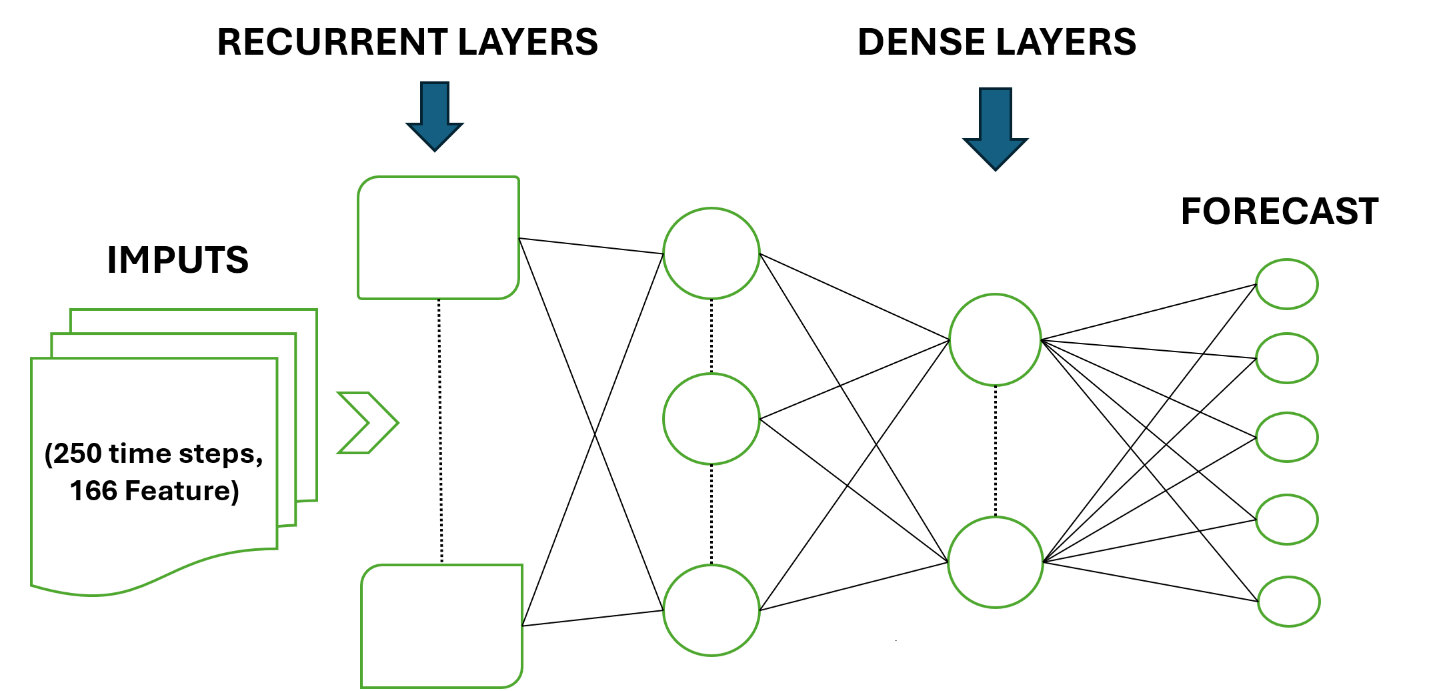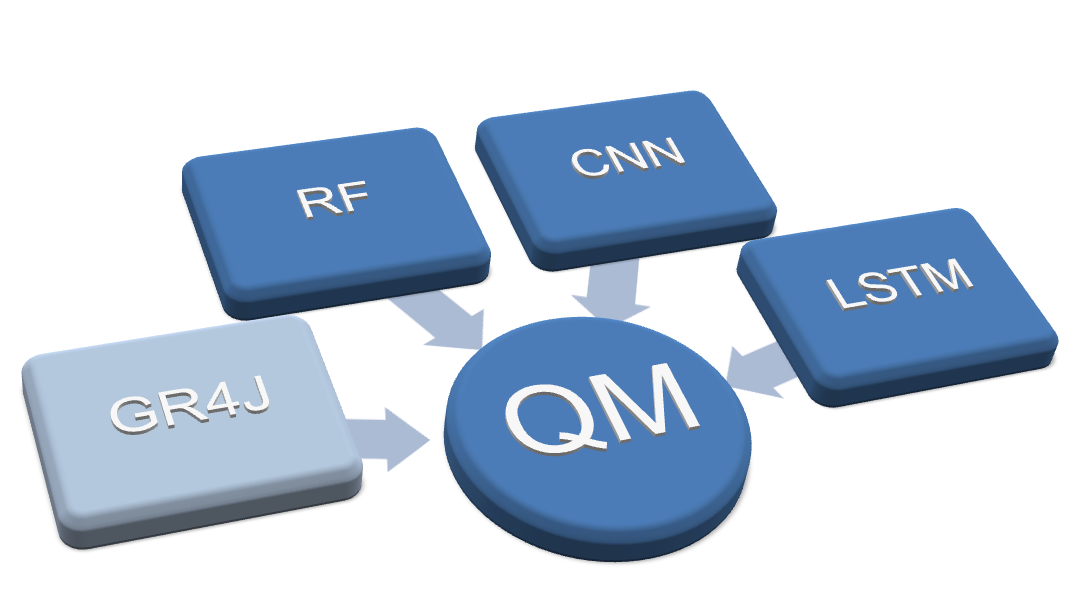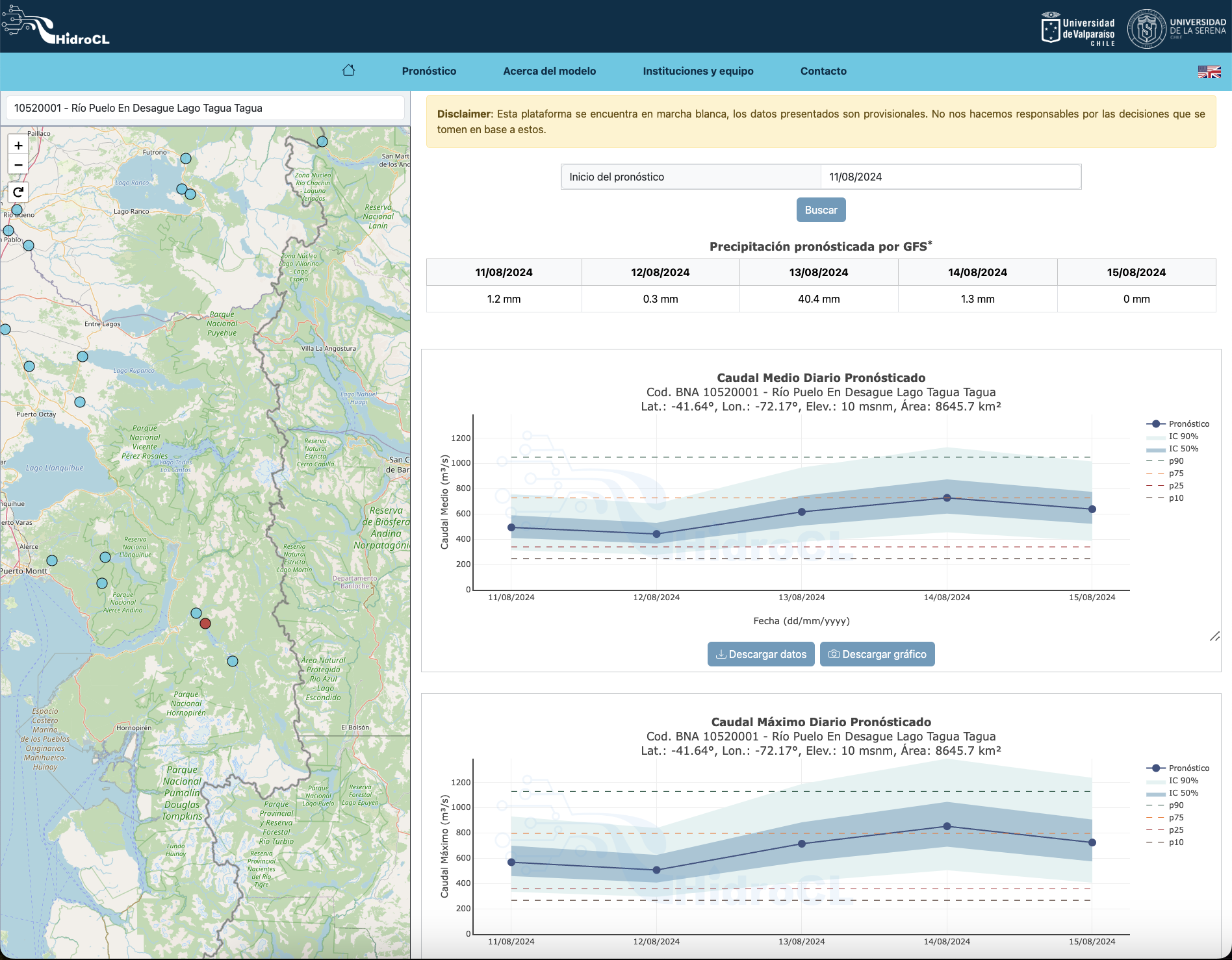Product of the beta status of HidroCL, currently the forecasts are only visible to registered users, mainly from the institutions involved in its development: Universidad de Valparaíso (UV), de la Universidad de La Serena (ULS), de la Dirección General de Aguas (DGA), de la Comisión Nacional de Riego (CNR) y de la Dirección de Obras Hidráulicas (DOH).
About HidroCL
HidroCL is a multi-model and multi-catchment system for streamflow forecasting. It can predict daily mean and maximum streamflow up to 5 days in advance. Currently it is in a beta stage, where test and monitoring are performed to detect and correct system errors. Also, in this stage, a continuous search of new features is conducted so them can be included in future versions.

The streamflow forecasting system HidroCL (Arévalo et al., 2025, in preparation) is organized in several components:
-
Data acquisition and pre-processing system (Tapia et al., 2025, in preparation). Gridded data from satellite, reanalysis, and global weather forecasting for Continental Chile are downloaded daily. This data is later temporarily and spatially aggregated to the catchment areas of the hundreds of control points included in the system (currently co-located to DGA streamflow gauges). Data is complemented with static variables to account for the climatology, geography, and geomorphology of each catchment. If necessary, data imputation is performed before formatting the data to be ingested by each one of the streamflow forecasting models.

-
Streamflow forecasting model based on Random Forest (RF). Based on a set of random decision trees fed not only with the previous data, but also with variables aggregated temporarily to periods longer than daily (e.g., precipitation from the last 7 days, last month, last 3 months, etc.). The streamflow forecasts are computed as the sum of base-flow (i.e., assuming no precipitation) plus surface runoff (during precipitation events), for both mean and maximum condition. Structural uncertainty is estimated by the distribution of the forecasts by each individual tree.

-
Streamflow forecasting model based on Convolutional Neural Networks (CNN). This model ingests a similar set of variables than RF, but also includes the results of a principal component analysis. A Convolutional Neural Network fed a sequence of dense layers which incorporates the weather forecasting for each day returning simultaneously daily mean and maximum streamflow for the 5 days within the forecast range. Its structural uncertainty is assessed through a dropout Monte Carlo method where a random subset of the neuronal connections are disconnected.

-
Streamflow forecasting model based on Long Short-Term Memory Neural Networks (LSTM; Saavedra et al., 2025, in preparation). This model is fed with a 250-days sequence of daily forcing variables (including static variables) to forecast, in one step, the mean or maximum streamflow for the following 5 days. The sequence is first processed by the LSTM layer, and then by three dense layers that fits the final output, obtaining a specific estimation for each day of forecast. Structural uncertainty is also characterized through multiple simulations with the dropout Monte Carlo method, with 100 realizations.

-
Automation, Unification, and Visualization subsystem (Paredes et al., 2025, in preparation). Its first task is to organize and run automatically more than a dozen of scripts and software that are part of the execution flow. Also verifies the correct execution of such scripts. To unify the forecasts generated with the RF, CNN, and LSTM models, a multi-layer perceptron network ingests the outputs of such models (including their structural uncertainty estimation) and outputs the mean or maximum streamflow forecasting.

Finally, the daily mean and maximum streamflow forecasts, including confidence intervals at 50% and 90% are shown through an interactive webpage.



